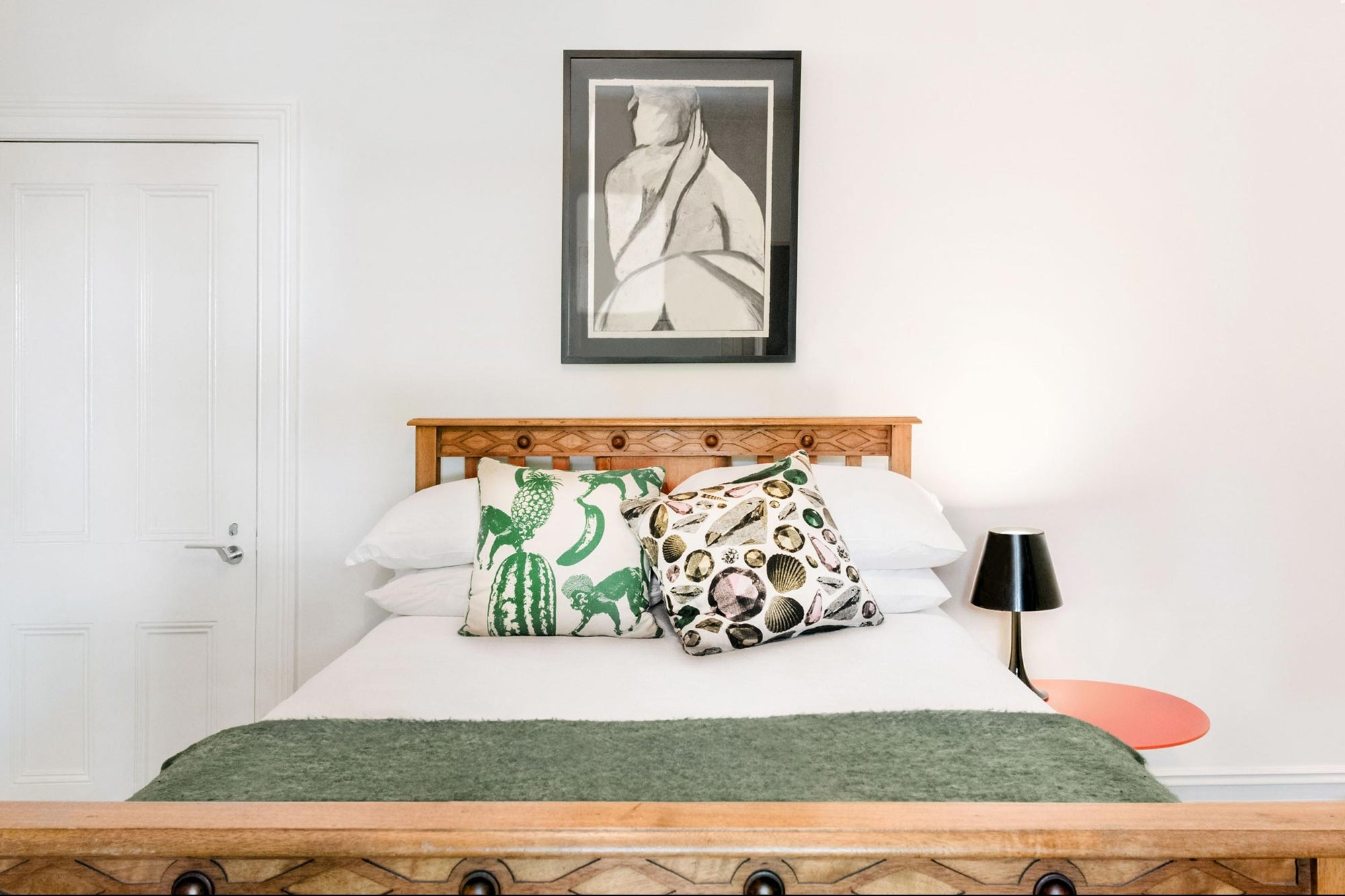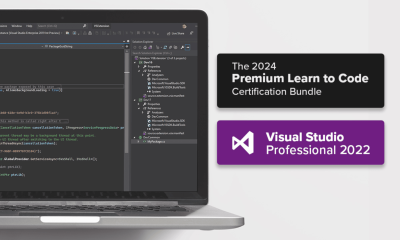Side Hustles
Find Out How Much Extra Money You Can Make With Unused Spaces in Your Home Using Airbnb The new book “Start Your Own Airbnb Business” explains how to tap the monetary potential of extra rooms and secondary properties.

Entrepreneur
In the new book, Start Your Own Airbnb Business, author Jason R. Rich breaks down the details of short-term rentals as a lucrative side hustle. In this excerpt, he explains how to set pricing based on your location and property type.
How to Set Your Nightly Pricing
Before you can set your nightly pricing, you need to understand what you’re offering and what potential guests are willing to pay for that type of accommodation. The more space, privacy, luxury, and uniqueness you’re able to provide to guests, the more you’ll be able to charge. That said, your income potential for renting out one room of your residence that will accommodate one or two people will be much lower than renting out an entire multi-bedroom house or apartment that can accommodate an entire family, for example.
Buy now: Entrepreneur Bookstore | Amazon | Barnes & Noble
Beyond just the space or property type you’re offering for accommodations, some of the other factors that go into price setting include:
- Your property’s geographic location and popularity (being located close to a tourist attraction, theme park, lake, ocean, ski resort, or special event will allow you to charge a premium). Short-term rental properties in regions that attract a lot of tourists tend to have a higher occupancy rate and have a higher nightly rate based on demand. If your property is not in a major tourist area, you’ll do better if it’s close to public transportation, restaurants, activities, recreation centers, and shopping, for example. Hosts with properties close to hospitals or colleges tend to attract longer-term guests.
- The collection of amenities being offered. Amenities go beyond offering an iron and shampoo. Some amenities that are desirable include a swimming pool, fireplace, hot tub, fully equipped chef’s kitchen, or a spectacular view.
- How many people your space can comfortably accommodate? This determines if you’ll attract solo travelers, business travelers, couples, or families.
- The type of guests you’re looking to attract. By catering to upscale guests, families with kids, people traveling with pets, honeymooners, or business travelers, for example, and offering accommodations and amenities that’ll appeal to your intended guests, you can often charge premium rates.
- Seasonality. Ideally, you want your short-term rental property to be in demand throughout the year. However, many places attract seasonal tourists, whether it’s for water-based activities in the summer or skiing in the winter. If your property will only attract bookings during certain times of the year, make sure you’ll be able to maximize revenue during that period and consider offering significant discounts to increase your occupancy rate during the off-season(s).
- Your ratings and reviews as a host.
- Whether or not the property is pet-friendly, family-friendly, or suitable for a special occasion (such as a honeymoon).
- If the property is equipped for remote workers or business travelers.
- If the property is handicap accessible or suitable for guests with special needs; this, too, can increase your occupancy rate, but not necessarily allow you to charge a premium rate.
- Whether what you opt to charge is in line with your business goals and profit objectives.
Analyze Your Local Competition
Start by exploring the Airbnb website (or mobile app) and figure out what other hosts with comparable properties in your area are charging. Be sure to check pricing for weekdays, weekends, holiday periods, and weekly rates for each property. Pay attention to the amenities and type of property being offered. As a potential guest looking for accommodations, you can use Airbnb’s filters to match the type of accommodations you’re planning to offer in your geographic area. As you evaluate your local competition, pay attention to whether Instant Booking or Self Check-In options are offered, whether the competition is offering standard Airbnb accommodations, accommodations operated by a Superhost, operating an Airbnb Plus property, and what additional fees the individual hosts are charging.
Once you’ve become acquainted with your local competition from other Airbnb hosts, go online or call nearby hotels, motels, B&Bs, and/or resorts. Determine their nightly pricing and what amenities these properties offer. Ultimately, you need to be able to justify your pricing, in part, based on what others are charging for similar accommodations.
What to Consider When Setting Your Rates
Beyond setting a default nightly rate for your property, you may choose to charge added fees for specific services and require a refundable deposit. Then, based on demand and other factors, you may opt to increase that nightly rate on weekends (Friday and Saturday nights), during holiday periods, and/or during peak travel times (such as school vacation periods). Or, depending on your goals, you might opt to attract more guests by offering various types of discounts or promotions. As you’re about to discover, Airbnb gives hosts a lot of flexibility when it comes to setting their pricing. Let’s look at some of your options.
Pros and Cons of Short-Term, Weekly, and Long-Term Rentals
In addition to taking advantage of Airbnb’s own Smart Pricing tool, which automatically adjusts your nightly rate based on demand (which will be explained shortly), beyond setting a default nightly rate, you have the option of setting special weekend pricing, as well as discounted rates for weekly, monthly, or even longer-term bookings. For weekly bookings, for example, Airbnb recommends offering at least a 25 percent discount off your default nightly rate. For a monthly booking (28 consecutive days or longer), Airbnb recommends offering at least a 50 percent discount off your default nightly rate.
Buy now: Entrepreneur Bookstore | Amazon | Barnes & Noble
These discount recommendations are just general guidelines, not requirements. Some hosts opt to offer just a 10 percent discount for weeklong bookings and a 20 to 30 percent discount for monthlong bookings, for example. But most travelers using Airbnb to find accommodations expect to receive some type of discount if they book an entire week (seven or more nights), a month (28 or more nights), or for an even longer term.
For example, if your property is located close to a college, you might attract visiting professors or students looking to stay with you for an entire semester (or longer). When you’re offering your property for short stays, with a bit of luck and hard work, you’ll hopefully achieve an above-average occupancy rate for your region. You’ll be able to charge your full nightly rate (or even a premium during peak times) to your short-term guests. However, you’ll have a lot of guest turnover. This means having to clean your property more often, manage more bookings, and have more interaction with a greater number of people.
Read the full article here

-

 Side Hustles5 days ago
Side Hustles5 days agoYou Might Not Get a New Job in 2025 Without These 2 Skill Sets
-

 Investing4 days ago
Investing4 days agoThe Marketing Mistake I Turned Into $1 Million in New Business
-

 Side Hustles4 days ago
Side Hustles4 days ago9 Questions Leaders Must Ask to End Employee Burnout
-

 Side Hustles3 days ago
Side Hustles3 days agoA Simple Four-Step Approach to Mastering Sales Psychology
-

 Side Hustles7 days ago
Side Hustles7 days agoTech, Business Leaders Attended Donald Trump’s Inauguration: List
-

 Side Hustles3 days ago
Side Hustles3 days agoHere Are the Cities Where Your Paycheck Goes the Farthest
-

 Passive Income6 days ago
Passive Income6 days agoA Step-by-Step Approach to Achieving Your Goals
-

 Side Hustles6 days ago
Side Hustles6 days agoHow to Effectively Manage a Multi-Generational Team


















